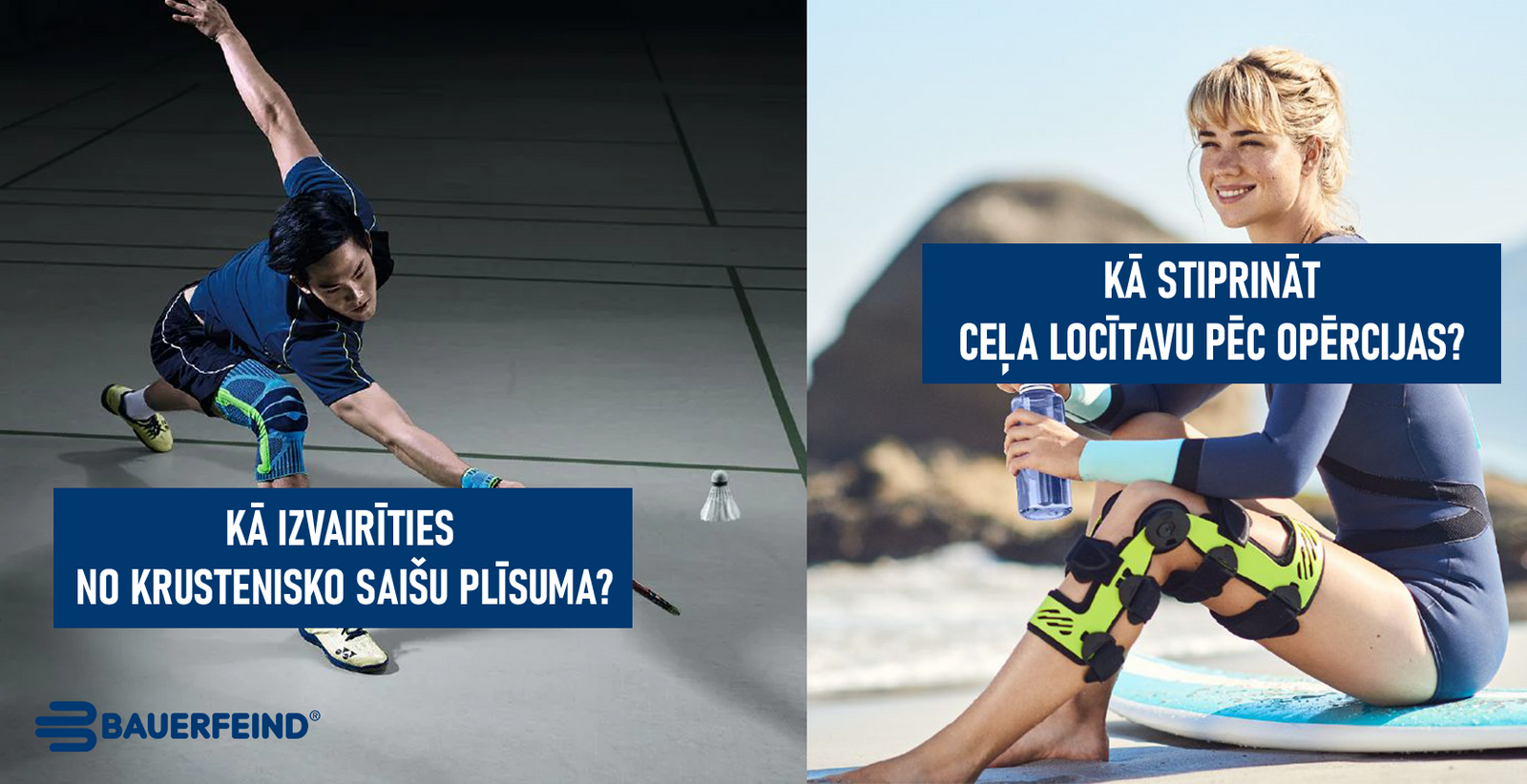How to avoid or live with a torn cruciate ligament? Coach H. Rodkes tells the story.
A torn knee ligament in sports and everyday life is a serious injury with a long recovery time. In order to avoid knee ligament rupture, it is recommended to perform exercises training the hamstrings and calf muscles.The cruciate ligaments are located in the center of the knee and are responsible for stabilizing the joint. Cruciate ligament tears are a common injury, especially among athletes. Although torn cruciate ligaments can be treated with surgery, it is not always necessary. For some people, the discomfort of a torn cruciate ligament can be manageable and they are able to live with the injury without surgery. The decision to have surgery is often made based on lifestyle, age and personal preferences. For young athletes who want to remain active, surgery may be the best option to restore full knee function. However, in older people who are less active, it may be possible to manage the pain with conservative treatment and avoid surgery. Ultimately, the decision whether or not to have surgery should be made based on what is best for the individual patient.



Look at the pictures: anatomy of the knee - an impressive "hinge" of tendons is a real powerhouse, which, together with the anterior thigh muscle, not only provides strong leg work, but also helps the cruciate ligaments to stabilize the knee. Provided that all the structures are well trained.
With what exercises to strengthen knee joints to avoid rupture of cruciate ligaments?
Exercises to stabilize the knee flexors:
- train all thigh muscles twice in ten days: quadriceps, and especially hamstrings and adductor muscles, both in complex and isolating exercises. In various load regimes suitable for age and health. Also, far BEYOND the usual "mass" style of fitness, when the muscles simply "burn". And biomechanically correct.
- regularly work "on calves/feet". If the ankle tilts more inward, special exercises must be performed at least four days a week.
- if there is a lack of flexibility in the back/hamstrings - they should be stretched daily.
- straight lunges/jumps should be performed with an active “overtaking rake”. Also depth jumps from elevation.
Working in such a sharp mode improves the molecular structure of both tendons and knee ligaments, making them stronger;
- at least once a week you have to perform maximum speed tasks, if possible - also short sprints, in which both the knee and hip joints are very intensively bent-straightened back and forth;
- it is necessary to teach the athlete perfect movement skills in time. At least run, jump, and coordinate hands with legs.
But first by testing him. The demands of the sport are as strong hamstrings as possible.
What aids to choose for the knee joint to avoid cruciate ligament rupture during sports?
Dynasty recommends the Bauerfeind sports orthosis for the knee. Sports orthosis provides additional protection against joint overload and cruciate ligament rupture. It has an anatomically correct pad that covers the kneecap (patella), receives and transfers the pressure created by the muscles, thus protecting the tendons, ligaments and patella; the lateral projections of the pad reach and protect the anterior part of the meniscus.
Sports knee orthosis:
- Activates the muscle
- Stabilizes and relieves the knee
- The knee pad cushions and diverts pressure from the knee vertebra
- Side fenders and pressure points provide road control
- Anatomically designed with built-in grip zones that firmly fit the knee while allowing maximum freedom of movement
How to strengthen the knee joint after cruciate ligament surgery?
If the cruciate ligament rupture has already occurred, we recommend rehabilitation with Bauerfeind SecuTec GENU after ligament surgery.About the knee joint orthosis:
- SecuTec Genu is extremely light.
- The narrow aluminum frame is anatomically shaped, flat and close fitting.
- The special frame construction takes care of simple and comfortable adjustment to the geometry of the leg, keeping the joint levels
- The specially hardened aluminum alloy makes the frame very light, stable and formable.
- The orthosis can be placed on the leg from the front.
- Depending on the physiology of the therapy, it is possible to fix the orthosis on the leg in the set position without any problems. Since the orthosis has a 4-point safety system, the biaxial joint is maximally stable.
- Joints that are protected from dirt and wear have a cushioned 0° flange.
- The breathable and skin-friendly padding is treated with a non-slip coating and can be easily assembled and disassembled for cleaning.
- To adjust it to the individual width of the knee (in case of swelling), condyle pads of different thicknesses are used.
- Freely positioned condyle pad prevents skin irritation.
- The strap loops can be locked in two positions for easy donning and are movable on the sides to adjust the position of the straps to the geometry of the legs.
- It is possible to change the mounting height of the lower strap closer to the joint to adapt it to the shape of the lower leg.
- In PCL care, the proximal strap to the joint should be folded ventrally. An additional strap should be used in the care of complex instability.
- Bending and straightening can be adjusted individually (Bending: 0°, 10°, 20°, 30°, 45°, 60°,75°, 90°, 120°), (Straightening: 10°, 20°, 30°, 45°)
Learn more about the Bauerfeind SecuTec Genu orthosis.
Follow other news from Bauerfeind on Instagram andFacebook platforms.

